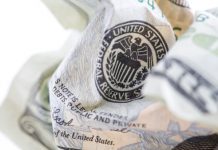Markets
Up until July US retail sales, yesterday’s trading resembled much of Monday’s action: risk aversion weighed on stock markets while generating a bid in core bonds and the US dollar. The market reaction on disappointing, declining, retail sales was telling: US Treasuries sold off while the dollar gathered additional momentum. EUR/USD even tested 1.1704/1.1695 support again while daily changes on the US yield curve ended narrowly mixed. It strengthens our view that last week’s post-CPI reverse action (lower USD & lower US yields) would be short-lived ahead of the Aug 26-28 Jackson Hole Symposium and the September 22 FOMC meeting. Tonight’s FOMC Minutes of the July deliberations could already be helpful in designing a roadmap out of extraordinary monetary stimulus. More and more Fed governors want to get rid of the US central bank’s net asset purchases which are currently running at $80bn/month for US Treasuries and at $40bn/month for mortgage-backed assets. They indicate that substantial further progress has been made in reaching the 2% average inflation goal while we’re only one or two (strong) labour market reports away from attaining the same with regard to robust employment. Another argument goes that the Fed’s bond-buying programme isn’t the right antidote to boost an economy suffering from supply issues rather than from a lack of demand. That’s especially true for the US housing market (and related MBS purchases). Drawing the parallel with the Fed’s previous process of tapering bond purchases, Fed governors conclude that the labour market currently is in better shape with inflation running way hotter. Therefore, they deem the previous 10 month taper process too slow and would rather prefer cutting net purchases towards zero over 6 to 8 month time horizon. Assuming the process will start in Autumn, this means ending net asset purchases by mid next year. We argued before that such faster than forecast cutback will imply a first Fed rate hike by end 2022 rather than in 2023 as the June FOMC Summary of Economic Projections suggested. Fed Chair Powell kept his cards close to his chest in a virtual event for students and teachers yesterday. He didn’t elaborate on monetary policy while repeating that it’s not yet clear whether the Delta strain will have important effects on the economy. At the July press conference, he did talk about a pattern where successive waves of Covid have tended to have a smaller economic impact. Today’s eco calendar is fairly thin apart from above-discussed FOMC Minutes with only a batch of US housing data and final EMU inflation numbers. Asian risk sentiment is much improved this morning (>+0.5%) compared to this week’s earlier sessions despite some weakness on WS yesterday evening.
News headlines
New Zealand’s first coronavirus case in six months discovered yesterday and the corresponding nationwide lockdown caused the Reserve Bank of New Zealand to refrain from what would have been the first rate hike since 2014. Despite retaining a generally optimistic economic view, the RBNZ said the re-introduction of restrictive measures “is a stark example of how unpredictable and disruptive the virus is proving to be”. The central bank still agreed though that, following the sudden halt of net bond buying in July, the level of monetary stimulus should be further reduced in the future. As such, it brought forward their own expectations of a first rate hike to Q4 this year. Markets adjusted their policy rate expectations yesterday, after news about the infection reached them, causing bond yields to slump more than 10 bps and the kiwi dollar to test support in the NZD/USD 0.69 area. The former initially dipped below that level in the wake of the RBNZ decision but is now trading a tad higher (0.694) compared to the open.
Japanese exports rose by 37% y/y in July, a significant slowdown from the 48.6% the month before. It’s the smallest gain since March and below the 39.4% consensus. Car exports in particular weighed on the headline figure. Imports also decelerated to a lower-than-expected 28.5% from 32.7%. The trade figures are seen suffering from widening restrictions to contain the (Delta) virus outbreak both in Japan and in its main trading partners.














